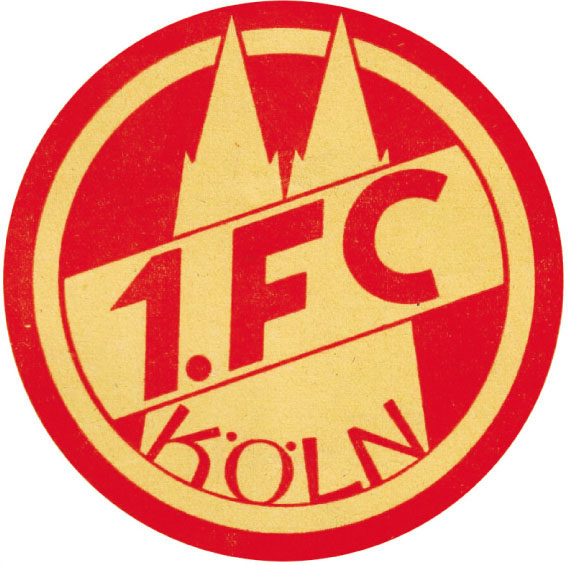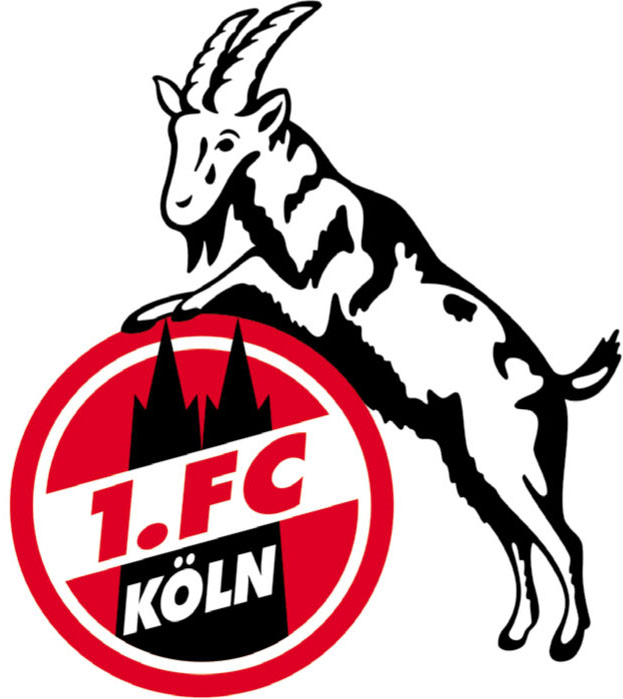
1. FC KÖLN
THE CATHEDRAL AND THE GOAT
In the south-west part of the German federal state of North Rhine-Westphalia lies the financial metropolis of Cologne. With over a million inhabitants, Cologne is the cultural and financial centre of the area and this ought to bring the football club advantages over other clubs in the region. Despite initial success, however, FC Köln has fallen behind the local competition. While clubs like Borussia Dortmund, Schalke 04, Borussia Mönchengladbach and Bayer Leverkusen have made their mark in European football in recent years, Köln has swung back and forth between Germany’s top two divisions.
Founded in 1948, FC Köln was a force to be reckoned with in the early days of the Bundesliga. They won the League in the first season (1963/640, collected another couple of league titles and four cup titles in the following years, and as recently as 1986 played in the UEFA Cup final against Real Madrid (losing 5-3 on aggregate). Though they haven’t experienced recent glory, the club is blessed with one of the most iconic club crests in German football – with elements depicting the city’s famous cathedral and the club’s goat mascot, Hennes.
CLUB: 1. FC Köln
NICKNAME: Die Geißböcke (the Billy-Goats)
FOUNDED: 1948
STADIUM: RheinEnergie Stadion, Cologne (50,000 capacity)
HISTORIC PLAYERS: Wolfgang Overath, Toni Schumacher, Klaus Allofs, Thomas Häßler and Lukas Podolski

1948–1950. FC Köln was founded relatively late. On 13 February, 1948, the clubs Kölner BC 01 and SpVgg Sülz 07 were merged to form 1. FC Köln. The two towers in the emblem depict the Kölnerdom, Cologne’s famous cathedral, the 19th biggest in the world. The number 1 in the emblem is a German tradition signifying that the club was the first in the city, a position that is always a matter of pride in this country.

1950–1960. On Köln’s two-year anniversary – February 13, 1950 – the club was given a goat as a gift by a circus. The idea was that the goat would bring the team luck. FC Köln received the gift and named the mascot Hennes, after player-coach Hennes Weisweiler. The goat quickly became popular and later that same year was included in the club’s emblem. The first time Hennes appeared on the team shirts was in the cup final against Stuttgart in 1954. Sadly, the years for this emblem are a little uncertain.

1970–1980. Since FC Köln lost Hennes, other goats have come and gone – when one dies a new one is chosen. As for Hennes II, it is said that he was poisoned by fans from Borussia Mönchengladbach, Köln’s arch-rivals, a rumour that has intensified the rivalry between the two clubs. The truth is that Hennes II was killed by a sheepdog in 1970. Like the previous emblem, it is not clear when exactly this one was used.

1990–present. Since Hennes was included on the emblem there have been only minor alterations, which testifies to the status the mascot enjoys. Beyond joining the players for the team’s home games, Hennes has his own label, his own brand of perfume, and also plays a murder victim in the German TV series SK Kölsch. Since the summer of 2014, Hennes VIII has been living in Cologne Zoo. Anyone who’s interested can follow Hennes live via webcam on FC Köln’s home page. In 2015 Hennes’ celebrity status rose to new heights after a German PR agency projected FC Köln’s crest onto the Hoover Dam. The image covered an area of 39,000 square metres (420,000 square feet), establishing a new world record.

Thomas Häßler played for Köln for six seasons (1984-1990). He helped the Billy-Goats become Bundesliga runnners-up in 1989 and 1990.